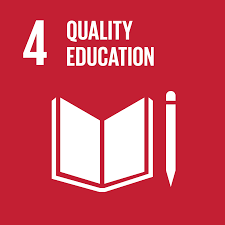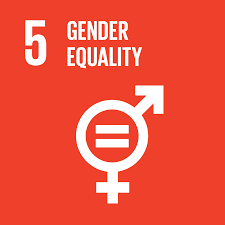IF I WERE A BOY
- Ann Yaa Safo

- Jun 29, 2020
- 6 min read
This article focuses on the following Sustainable Development Goals:
As the number of global coronavirus cases has increased, more schools have been closed down and more and more students forced to stay at home in order to comply with lockdown regulations. This has been detrimental to efforts made to achieve SDG 4: Quality Education. A recent report released by the Malala Fund estimates that 10 million additional secondary school-age girls could be out of school after this initial wave of the COVID-19 crisis has passed. For many adolescent girls, especially those from low-income countries and the poorest communities, access to education was already a challenge prior to COVID-19. A recent UNICEF report shows that nearly one in three adolescent girls from the poorest households around the world have never been to school, and estimates show that only 25 percent of the poorest girls in low-income countries complete primary school. Emergencies exacerbate pre-existing inequalities and intensify the existing learning crisis.
In addition, evidence shows that prolonged school closure can also result in increased sexual abuse and teenage pregnancies. A report published by the UNDP in 2015 stated that “a reported increase in adolescent pregnancies during the Ebola outbreak has been attributed largely to the closure of schools.” In fact, a working paper released by Bandiera and others has revealed greatly disturbing statistics; the paper claims that “in villages highly disrupted by Ebola, girls were 10.7 percentage points more likely to become pregnant, with most of these pregnancies occurring out of wedlock.” Even more distressing is a United Nations report which estimates this to be a significantly higher percentage of 65.

It is evident that the prioritization of girls is inevitable if society is to be sustained. At the moment, our efforts, whether as individuals, organizations, or nations, need to be geared toward mitigating the impact these disproportionate effects have had and continue to have. One such important line of action is collaborating with community-based organizations. A document published by the organization She’s The First effectively outlines why ‘these organizations, and the many grassroots organizations like them around the world, are uniquely suited to slow the spread of COVID-19 and ensure the safety of girls in the most vulnerable communities.’
The relevance of these partnerships, according to She’s The First, is two-fold:
The advantage of trusted access to remote communities. These Community Based Organizations are able to leverage educated students and their parents to influence others and in doing this promote healthy behaviors and disseminate essential information.
A gender-sensitive approach: these organizations tend to insist upon ensuring that their efforts are driven by girls voices’, and that - the entire response plan they adopt is crafted by, for and with girls.
These community-based organizations may support girls through the following means:
Provision of mobile phone devices equipped with credit making sure that there are weekly check-ins via their mobiles through which they shall conduct mentorship or education programs with supplementary printed material. These programs should incorporate regular sexual or reproductive health and rights education.
Prioritization of gender-based violence (GBV) services as essential and lifesaving. These include rapid response plans such as equipping girls with emergency phone numbers that are available and functioning 24/7.
The distribution of health and hygiene information through means such as local language skits on television or radio live broadcasts or pre-recorded videos and printed material.
The adoption of new methods of providing information and support in sexual and reproductive health and rights to adolescents and young people, including through the use of social media, telehealth, and the pooling of multiple services.
The feasible use of existing supply chains to provide resources in short supply such as community food-sharing programs and care packages. The materials distributed should include physical materials, soap, and menstrual hygiene products to address the needs of girls.
Strengthening the leadership and meaningful participation of girls and young women in all decision-making processes to ensure their perspectives are heard and needs are met. This can be facilitated through the use of technology and digital platforms (Plan International).
Ensure that response plans consider and prepare for expected surges in GBV. – Invest in scaling up response services, including mobile and online support, working with specialist women’s and girls’ rights organizations. – Integrate GBV into the public health response, by e.g. training and supporting health workers to identify and sensitively handle disclosures of abuse and ensuring that medical services for GBV survivors are not deprioritized.
Collaboration with companies like Uber —which has already announced that it will provide free rides to women fleeing domestic abuse - to ensure that victims of acts of abuse can escape to safe spaces.
Emulating programs like Girls Out Loud that seek to ‘create digital safe spaces for girls through the use of closed, moderated Facebook groups.’ (Plan International). These allow for the sharing of information and social support with peers as well as provide girls at risk the opportunity to benefit from psychological aid or referrals from experienced moderators placed in charge of these groups.
It is, therefore, necessary to complement the efforts of the Community Based Organizations by:
i. Prioritizing girl-centered organizations in the allocation of funds by funding institutions and governments.
ii. Ensuring the early release of funds to these organizations.
iii. Ensuring the ease of access to and flexibility of procedures involved in the administration and utilization of allocated funds.
iv. Subscriptions to monthly giving programs by individual citizens to allow for a predictable source of income available to nonprofits.
v. Ensuring that sexual and reproductive health and rights are not deprioritized by governments. Plan International makes the case that these are essential lifesaving services that need to be part of the critical response to the COVID-19 crisis.
vi. Prioritizing learning continuity for girls: In the wake of grave concerns that rising drop-out rates will disproportionately affect adolescent girls, it is imperative to provide and top-up financial support to close the education financing gap brought about by Covid-19.
vii. Ensuring national program scheduling and learning structures are flexible and allow self-paced learning so as not to deter girls who often disproportionately shoulder the burden of care.
viii. Making sure that governments keep social welfare services open and central to preparedness and response to Covid-19 and that they are funded adequately throughout all stages of response.
ix. Waiving school and examination fees to facilitate the return of girls’ to physical or virtual schooling. This will motivate parents and guardians to allow their girls to continue their education.
x. Ensuring that national distance-learning programs are accessible to girls in marginalized communities that battle with poor connectivity and electricity supply. Resources of a nature that permits offline access including print, radio broadcasts, and television or mobile phone GIFS if possible.
xi. Reassessing policies that exclude pregnant girls from attending school as these are significant sources of exclusion and inequality between genders in the sphere of education.
The case made by She’s the First for supporting Community-Based Organizations is noteworthy. Advanced economies have the advantage of quickly and easily reallocating resources to support the poorest and most marginalized groups. For lower-income countries where there is no bailout, however, the best course of action is investing in a grassroots organization which are able to react in real-time to address pressing needs.
Ultimately, efforts towards preparing for and dealing with the COVID-19 outbreak need to consider that different groups (including gender groups) are affected differently by the pandemic.— All policies and interventions should, therefore, have the following characteristics as outlined by Plan International: ‘equitable, gender-transformative, protective of human rights, inclusive of the poorest and most vulnerable people in society, and responsive to the different needs and risks.’ Only then, can we make any headway in achieving SDG 4: Quality Education, SDG 5: Gender Equality and SDG 10: Reduced Inequalities.
It is our duty to ensure that no girl ever has to think to herself ‘If I were a boy, I would have much better …’ and always remember, change starts with you.
External Resources
She’s The First is supporting efforts at improving access and quality for girls. To donate to She’s The First, visit: https://shesthefirst.org/covid.
Another organization working tirelessly to improve the quality of life for girls is About Face. Visit them at https://about-face.org/.
Girl Up is also a great organization to support. Here is the link: https://girlup.org/.
To see the impact Girls Out Loud is making, visit https://www.facebook.com/girlsoutloudorg/.
Works Cited
“COVID-19 School Closures Put Girls at Unique Risk of Violence,.” Center For Global Development, 27 May 2020, www.cgdev.org/article/covid-19-school-closures-put-girls-unique-risk-violence-dropout-survey-education.
“COVID-19 Response Fund.” She’s the First, shesthefirst.org/covid. Accessed 27 June 2020.
Black, Meg. “Uber Offers Free Rides for People Fleeing Domestic Violence During COVID-19 Pandemic.” Global Citizen, 29 Apr. 2020, www.globalcitizen.org/en/content/uber-offers-free-rides-for-people-fleeing-domestic.
Odhiambo, Agnes. “How Girls’ Education and Safety Will Be Harmed by the Covid Response.” Human Rights Watch, 15 Apr. 2020, www.hrw.org/news/2020/04/15/how-girls-education-and-safety-will-be-harmed-covid-response.
“How Will COVID-19 Affect Girls and Young Women?” Plan International, plan-international.org/emergencies/covid-19-faqs-girls-women. Accessed 27 June 2020.
Jenkins, Robert. “5 Actions to Help Bring the Most Marginalized Girls Back to School after COVID-19.” Brookings, 15 May 2020, www.brookings.edu/blog/education-plus-development/2020/05/15/5-actions-to-help-bring-the-most-marginalized-girls-back-to-school-after-covid-19.
“The Private Sector’s Role in Mitigating the Impact of COVID-19 on Vulnerable Women and Girls in Nigeria | WEPs.” WEPS, UN Women, www.weps.org/resource/private-sectors-role-mitigating-impact-covid-19-vulnerable-women-and-girls-nigeria. Accessed 27 June 2020.
IGC. “COVID-19 and the Impact on Women - IGC.” International Growth Centre, 28 Apr. 2020, www.theigc.org/blog/covid-19-and-the-impact-on-women.
“Why Are Women More than Men Suffering during the COVID-19 Pandemic?” World Economic Forum, 9 May 2020, www.weforum.org/agenda/2020/05/what-the-covid-19-pandemic-tells-us-about-gender-equality.
“How We Can Reduce Gender-Based Violence During COVID-19.” CARE News, 23 Apr. 2020, news.care.org/article/how-we-can-reduce-gender-based-violence-during-covid-19.
“WHO Concerned over COVID-19 Impact on Women, Girls in Africa.” WHO | Regional Office for Africa, 18 June 2020, www.afro.who.int/news/who-concerned-over-covid-19-impact-women-girls-africa.
“How Will COVID-19 Affect Women and Girls in Low- and Middle-Income.” Center For Global Development, 16 Mar. 2020, www.cgdev.org/blog/how-will-covid-19-affect-women-and-girls-low-and-middle-income-countries.








Comments